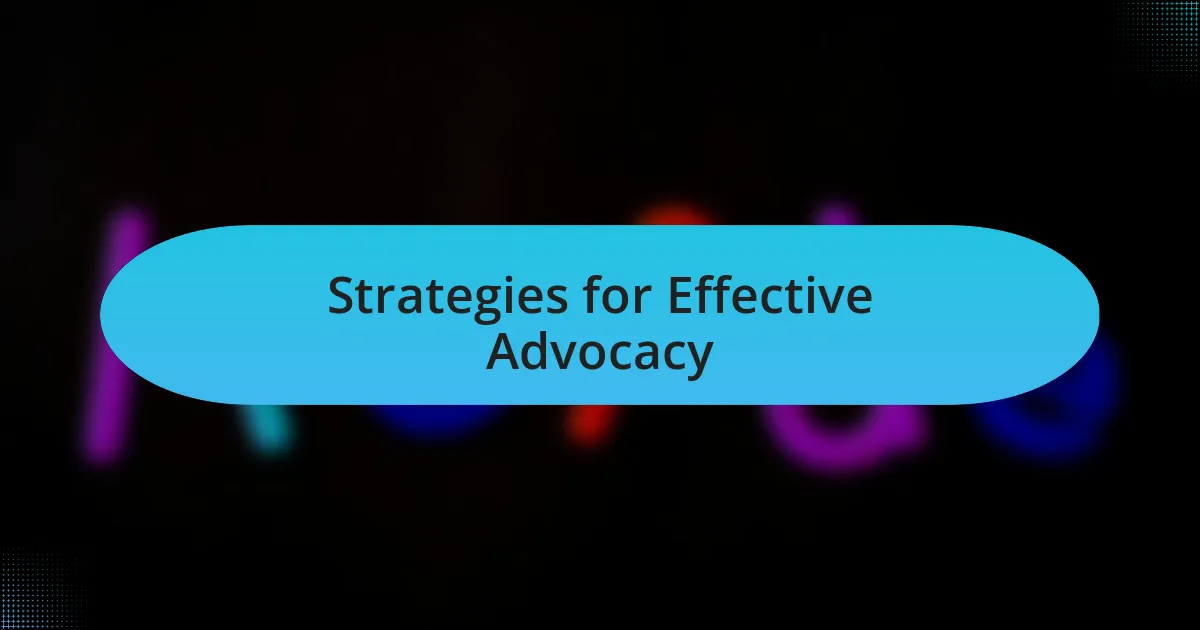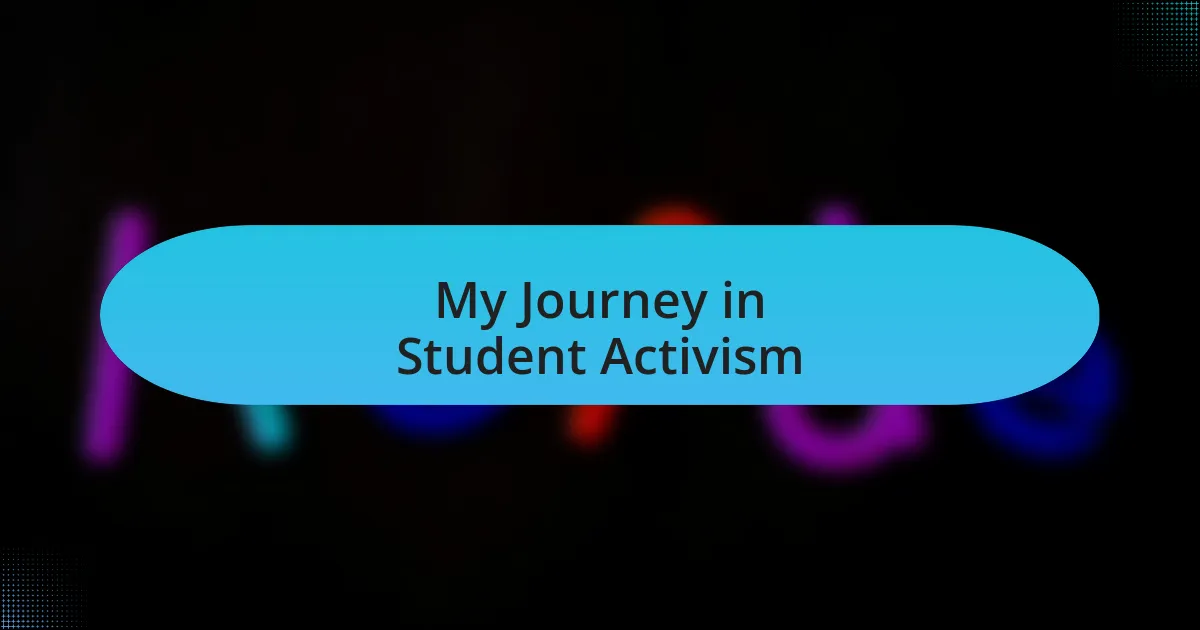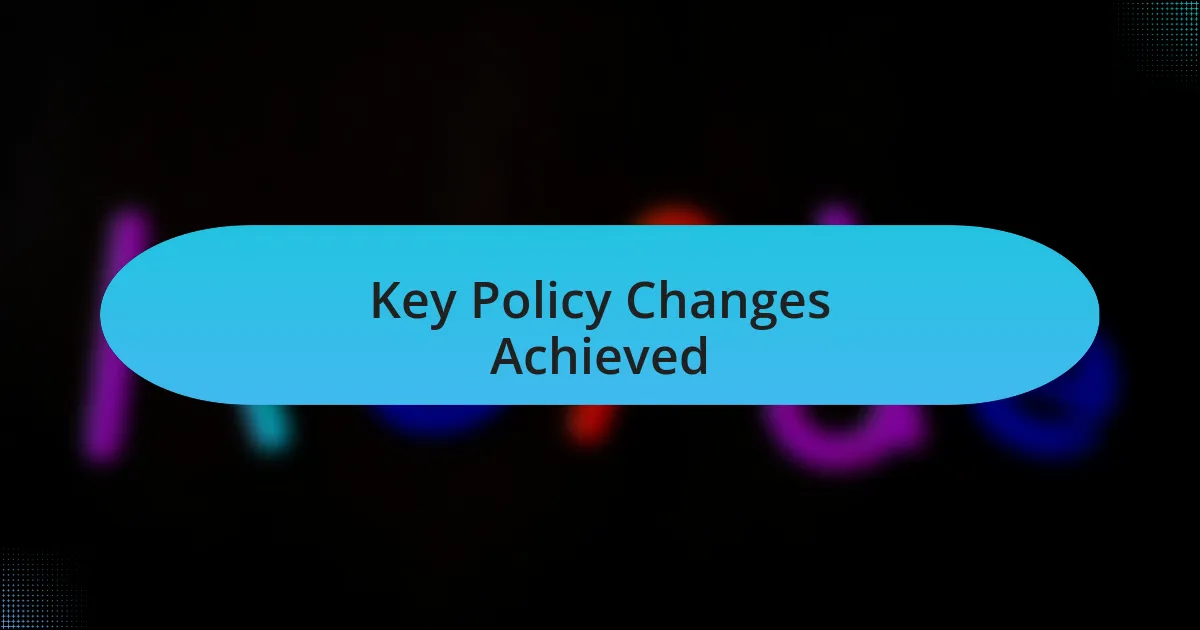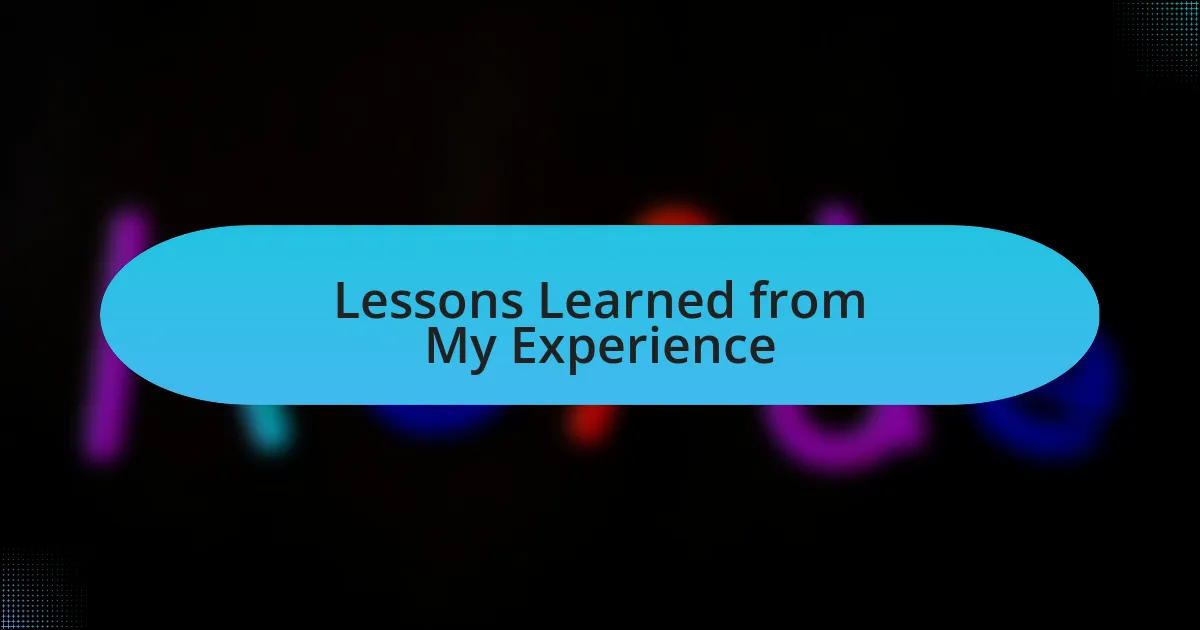Key takeaways:
- University Student Unions foster student engagement and connect the student body with university administration, allowing for impactful advocacy on critical issues.
- Successful advocacy involves understanding peer needs, building coalitions, and crafting compelling messages to drive change, as demonstrated through various campaigns.
- Personal stories and meaningful connections strengthen advocacy efforts, emphasizing the importance of a supportive network and mentorship in activism.
- Key achievements include the implementation of mental health resources, inclusive dining options, and sustainable campus policies, highlighting the effectiveness of persistence and collaboration in activism.

Understanding University Student Unions
University Student Unions are vibrant hubs for student engagement and community. They serve as spaces where students can gather, share ideas, and work collectively towards common goals. I recall my days in student union meetings, where impassioned debates often sparked innovative projects that benefited our campus.
What truly struck me was how these unions act as a bridge between the student body and the university administration. Can you imagine having a platform that amplifies your voice on critical issues? I remember advocating for mental health resources, and it was rewarding to see how our union’s persistence led to tangible policy changes that supported students in distress.
Additionally, the experience of organizing events with fellow students can profoundly shape your leadership skills. I once coordinated a campaign that raised awareness about sustainability on campus, which not only educated my peers but also fostered a sense of unity among us. These interactions are not merely extracurricular; they profoundly influence our personal growth and the university experience as a whole.

Strategies for Effective Advocacy
Advocacy starts with understanding the needs of your peers. I found it crucial to conduct surveys and hold focus groups, gathering firsthand insights into the issues that mattered most to students. Reflecting on my time as a representative, I recall how listening to different voices shaped our advocacy efforts and brought authenticity to our campaigns. Isn’t it powerful to think how this connection can drive real change?
Building coalitions with other student organizations can amplify your impact significantly. I remember collaborating with various clubs to organize a campus-wide climate strike, bringing together different perspectives under a shared cause. This alliance not only demonstrated our collective strength but also drew more attention from administration. When we unite, we transform from individual voices into a resonating chorus demanding change.
Lastly, crafting clear and compelling messages is essential for effective advocacy. One time, I wrote a petition advocating for improved dining options on campus. By focusing on personal stories and the tangible benefits for students, we garnered a strong response. Have you ever considered how a well-framed message can captivate an audience? It’s all about connecting emotionally, allowing people to see themselves within the issue you’re presenting.

Building a Supportive Network
Building a supportive network is vital in any advocacy effort. I remember when I first reached out to classmates, organizing informal meet-ups to discuss shared challenges. Those conversations fostered camaraderie and trust, creating a safe space where everyone felt comfortable sharing their experiences. Have you ever felt that sense of belonging when connecting with others over common goals? It’s energizing and can make the difference between feeling isolated and empowered.
Finding mentors who understand your passion can significantly enhance your advocacy journey. I was fortunate to connect with a professor who believed in my cause. Their guidance helped sharpen my focus and provided invaluable connections to other campus resources. Each tap into their wisdom expanded my understanding of our institution’s landscape. How many of us wish we had that kind of support earlier in our journey?
Additionally, leveraging social media created extraordinary opportunities for engagement. I initiated a campaign that showcased student stories, attracting attention from fellow advocates while drawing in individuals who may not have been directly involved. Each post sparked conversations and encouraged more peers to share their narratives. When we embrace technology, we can extend our reach and strengthen our network like never before.

My Journey in Student Activism

My Journey in Student Activism
My journey in student activism began unexpectedly during a campus event that stirred a passionate debate. I found myself standing among peers, their voices rising in frustration over overlooked issues, and I realized I wasn’t just a bystander. In that moment, I felt an overwhelming determination to not only join the conversation but to lead it, igniting a fire within me that would shape my path forward.
I vividly remember organizing my first rally. It was daunting yet exhilarating, as I reached out to students from all walks of life, each with their unique story. On the day of the event, the energy was palpable; we stood united, chanting for change, and the feeling of collective empowerment was unlike anything I had experienced before. Have you ever been swept up in the passion of a crowd, where the sheer momentum felt unstoppable?
As I navigated through this activism journey, I encountered setbacks that tested my resolve. There were days when I questioned my impact, struggling with self-doubt, especially when faced with administrative resistance. Yet, each challenge deepened my understanding of the systemic obstacles we were fighting against and strengthened my commitment to advocate for equity and justice in our university. How could I turn these challenges into stepping stones for progress? I learned that perseverance, coupled with an unwavering belief in our cause, could lead to meaningful change.

Key Policy Changes Achieved
The efforts of our activist group bore fruit when we successfully advocated for a comprehensive mental health policy on campus. I recall the late nights spent drafting proposals and gathering student testimonials that emphasized the pressing need for accessible mental health resources. When the administration finally approved our policy, it was a moment of triumph that confirmed our belief that student voices truly matter.
Another significant change came when we pushed for more inclusive dining options to cater to diverse dietary needs. I remember meeting with university officials, armed with research and student feedback, passionately explaining why everyone deserves the right to meals that respect their identities. When our suggestions were implemented, it felt like a victory not just for a few, but for the entire student body, fostering a culture of inclusivity on campus.
One of the most impactful changes I witnessed was the implementation of a sustainable campus policy. I had campaigned tirelessly for environmental reforms, and it was during a presentation to the student senate that I shared my personal journey of reducing plastic use. The moment they voted in favor of integrating more sustainable practices was not just a policy win; it was a shared commitment to a future where students actively participate in caring for our planet. Have you ever felt that spark of hope when a campaign you’ve championed finally takes flight?

Lessons Learned from My Experience
Throughout my journey in activism, one key lesson I learned is the importance of persistence. I remember attending countless meetings where it felt like we were hitting a brick wall. Each setback tested my resolve, but I realized that change often takes time and determination. This experience taught me that every small step contributes to the larger goal, creating a resilient mindset.
Another vital lesson was the power of collaboration. I vividly recall collaborating with fellow students from different backgrounds and fields of study. When we came together, our diverse perspectives enriched our approach and strengthened our proposals. It became evident to me that unity amplifies our voices, making it easier to influence the decision-makers on campus.
Additionally, I discovered the significance of storytelling in advocacy. Sharing my personal struggles and triumphs connected with others on a deeper level. I found that when I spoke from the heart, people were more inclined to listen and empathize. This approach not only humanized our cause but also fostered a collective understanding, making it easier for us to rally support for our initiatives. Have you ever noticed how a compelling story can move mountains?